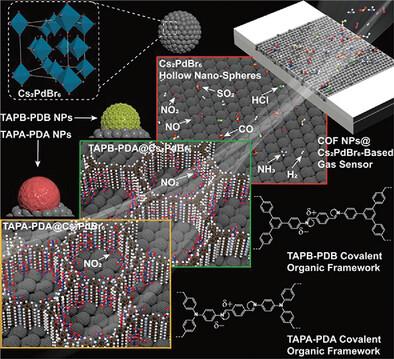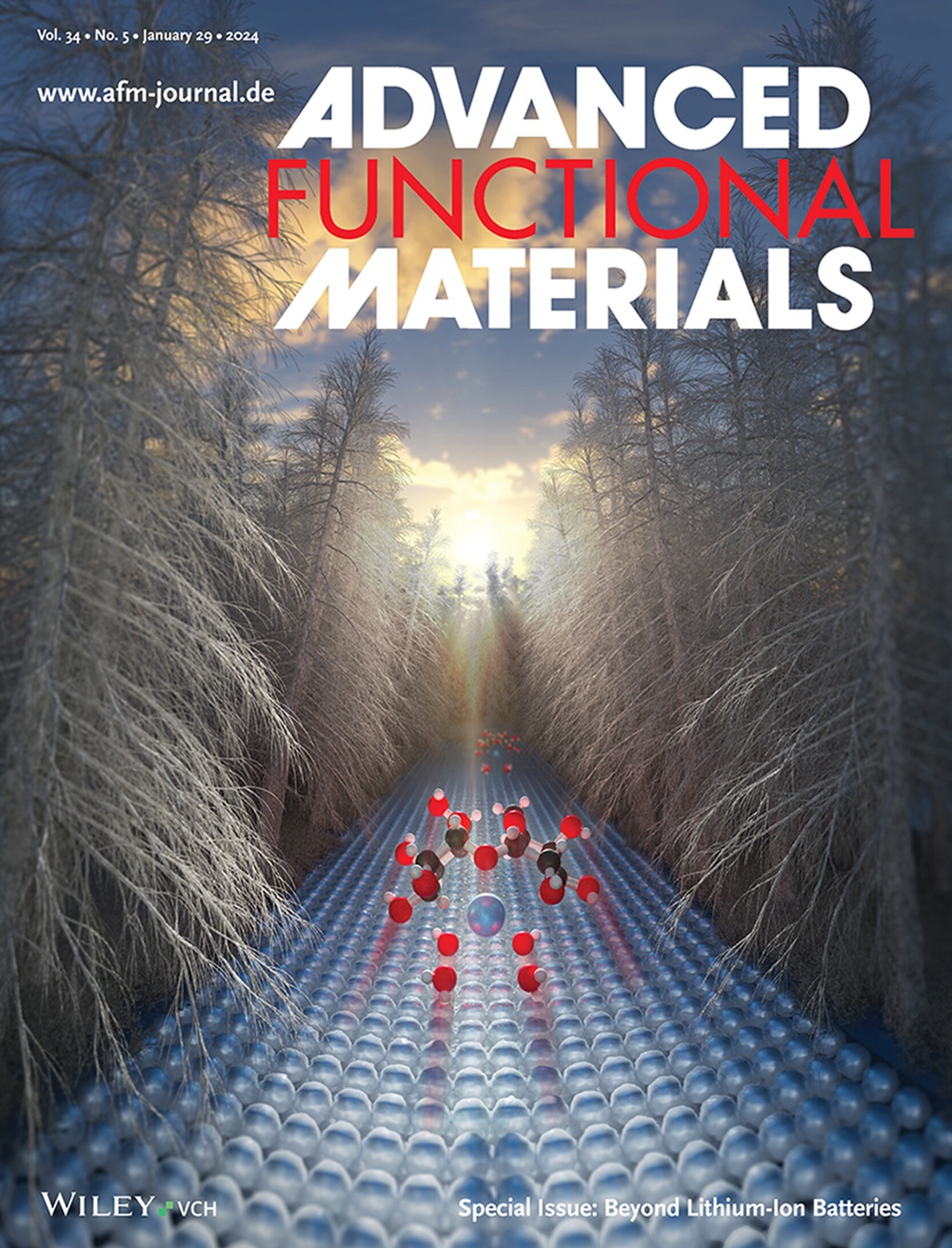用于选择性和灵敏气体传感的共价有机框架增强型金属卤化物 Perovskites
IF 18.5
1区 材料科学
Q1 CHEMISTRY, MULTIDISCIPLINARY
引用次数: 0
摘要
溶液加工的无铅卤化物包晶气体传感器具有较低的气体检测限,有望替代传统的金属氧化物化学电阻器。然而,由于缺乏配位不饱和表面金属离子及其对湿度的敏感性,卤化物包光体化学电阻器往往存在选择性差和耐用性差的问题。为解决这些问题,本文提出了一种通用策略,即在 Cs2PdBr6 包晶表面涂覆共价有机框架 (COF),从而提供对特定气体高度敏感的混合传感器材料,并在实际工作条件下表现出卓越的稳定性。混合化学电阻器对 NO2 或 NH3 气体具有高灵敏度和可控选择性。具体来说,TAPB-PDA@Cs2PdBr6 对二氧化氮的检测限达到了 10 ppb,这是目前报道的基于包晶的气体传感器的最低值,而且在环境空气中连续暴露数周后仍能保持其性能。相比之下,COF-5@Cs2PdBr6 对 NH3 具有高选择性,其检测限为 40 ppb。结构和光谱表征以及机理研究为这些新型混合传感器材料的卓越性能提供了分子层面的见解,为该领域树立了新的标杆,即超越了传统卤化物包晶传感器的选择性和灵敏度。本文章由计算机程序翻译,如有差异,请以英文原文为准。

Covalent Organic Framework-Enhanced Metal Halide Perovskites for Selective and Sensitive Gas Sensing
Solution-processed lead-free halide perovskite gas sensors possess low gas detection limits, offering promising alternatives to traditional metal oxide chemiresistors. However, halide perovskite chemiresistors often suffer from poor selectivity and durability due to a lack of coordinatively unsaturated surface metal ions and their sensitivity to humidity. To address these issues, a general strategy is presented in which the Cs2PdBr6 perovskite surface is coated with covalent organic framework (COF) to provide hybrid sensor materials that are highly sensitive to specific gases and demonstrate excellent stability under real-working conditions. The hybrid chemiresistors demonstrate high sensitivity and controllable selectivity toward NO2 or NH3 gases. Specifically, TAPB–PDA@Cs2PdBr6 achieves a detection limit of 10 ppb for NO2, the lowest value reported for a perovskite-based gas sensor, maintaining its performance after continuous exposure to ambient air for several weeks. In contrast, COF-5@Cs2PdBr6 shows high selectivity to NH3 and has a detection limit of 40 ppb. Structural and spectroscopic characterization combined with mechanistic studies provide molecular-level insights into the outstanding properties of these new hybrid sensor materials, which set a new benchmark in the field, i.e., surpassing the selectivity and sensitivity of conventional halide perovskite sensors.
求助全文
通过发布文献求助,成功后即可免费获取论文全文。
去求助
来源期刊

Advanced Functional Materials
工程技术-材料科学:综合
CiteScore
29.50
自引率
4.20%
发文量
2086
审稿时长
2.1 months
期刊介绍:
Firmly established as a top-tier materials science journal, Advanced Functional Materials reports breakthrough research in all aspects of materials science, including nanotechnology, chemistry, physics, and biology every week.
Advanced Functional Materials is known for its rapid and fair peer review, quality content, and high impact, making it the first choice of the international materials science community.
 求助内容:
求助内容: 应助结果提醒方式:
应助结果提醒方式:


